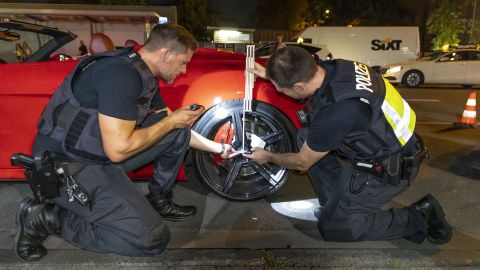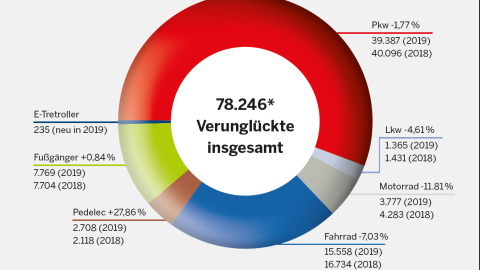Modern motor vehicles are supported by a large number of driver assistance systems. In the event of a traffic accident, these assistance systems leave only a few mechanical traces at the scene of the accident. However, the electronic control system of these assistants provides the digital vehicle tracks that are important for recording traffic accidents. This recorded data includes the speed being driven at the time of the collision, the position of the steering wheel and the actuation of the brake and gas pedal pedals.
An example illustrates just how important this data is: Within a built-up area, a car driver wanted to turn left from a parking lot onto the main road. This resulted in a collision with a vehicle coming from the right. Initially a classic disregard of right of way. However, by reading the digital data, it was possible to prove that the car coming from the right was traveling at a speed of 122 km/h. The digital vehicle tracks led to the driver turning in being exonerated.
Only the addition of digital vehicle tracks to traditional forensic evidence makes it possible to fully reconstruct the course of the accident today and in the future. The field of "classic" forensics has also developed further in recent times. For example, following a successful pilot phase in the Cologne and Bochum police authorities, the 3D scanner was assigned to the police authorities in Bielefeld, Dortmund, Düsseldorf, Essen and Münster in February 2019 as a further means of recording accidents. The scan results (projects) generate a 3D image that allows movement around the virtual traffic accident scene and enables any measurements to be taken. The 3D process completely "freezes" the accident site, including existing weather and lighting conditions, so that subsequent on-site visits are no longer necessary. In March of this year, four more 3D scanners were allocated to the authorities in Euskirchen, Recklinghausen, Rhein-Sieg-Kreis and Rhein-Kreis Neuss.
The ProDigi project has been completed and the final report has been handed over to the head of the police department at the Ministry of the Interior, Dr. Daniela Lesmeister. In August 2019, the Ministry of the Interior of North Rhine-Westphalia approved the continuation of ProDigi. Under the leadership of Silke Paul (Cologne Police Headquarters), the ProDigi working group is working on implementing the results of the ProDigi project and optimizing police expertise in the field of traffic accident forensics. From May 2018 to April 2020, a total of over 740 vehicles were subjected to a readout test and data was successfully secured in 394 cases.

